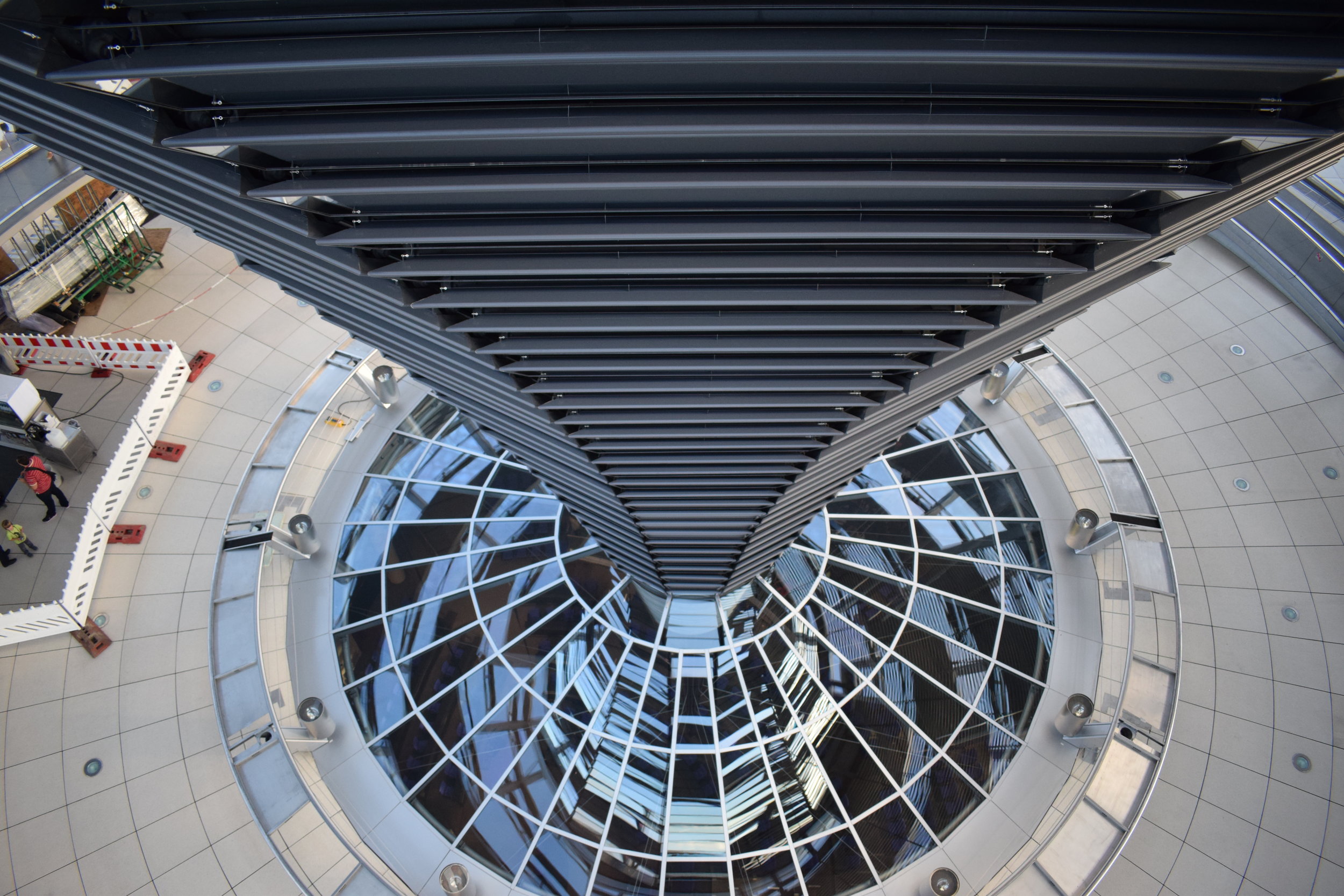Auf Wiedersehen, Berlin
/The Reichstag - one of the best and most-impressive attractions in Berlin.
When a German parliamentary committee decided to erect a building at Königsplatz, Berlin in 1872 as a permanent meeting place for the Bundestag, they probably didn’t realise that over a century later it would become one of the most popular and well thought out tourist attractions in Deutschland.
Yet when Frankfurt architect Paul Wallot’s original design caught fire and was severely damaged in a 1933 arson attack, the building’s future couldn’t have looked bleaker.
But in 1999 when a renovation of the building, which included the installation of a glass dome, was completed, the seat of parliament moved to the Bundestag and it opened its doors to visitors.
Outside of the Reichstag building.
The Reichstag is Berlin’s panoramic centre. The glass dome, which visitors have to register in advance for, sits in the perfect spot for observing the surrounding urban sprawl and identifying many of the city’s historic buildings.
Included in the admission fee – which is exactly zero Euros and zero cents – is an audio guide, which automatically begins along certain points of the Reichstag dome’s spiral walkway, giving the history behind what visitors can see in front of them, as well as a background of the building itself and key characteristics.
Looking down into the debating chamber where the Bundestag meet.
The only slight stipulation is a pre-registration process. Visitors are required to book in at the office just over the road from the Reichstag with a form of identification, and popularity can mean that slots won’t be available until one or two days later – as was the case with us, which resulted in the Reichstag going from to beginning to the end on the Berlin section of the itinerary.
They say save the best ‘til last, and that’s exactly what we did.
But the Reichstag is not Berlin’s only asset. After all, there has to be a lot to capture the imagination of over 3.5 million people in Europe’s fifth most-populous city.
The Olympiastadion still bares the Olympic rings, as well as a troubled past.
The Olympiastadion – home to the ‘Nazi Olympics’ of 1936 and now Bundesliga side Hertha Berlin – is one such example of what Berlin has to offer.
A plaque commemorates the 1936 games and gold medal winners.
The venue was renovated for the 2006 FIFA World Cup and hosted last year's UEFA Champions League final, which was won by FC Barcelona.
The now-renovated 80,000 seater stadium is open to the public on non-matchdays, and tours are available in addition to individual viewings of the entire Olympic park. In the summer, the open air swimming pool is also open for use, so don’t forget your swimming costumes, because you can literally swim in history!
The pool is open for swimming from July to September.
The Olympiastadion is approximately 10 kilometres outside of the city centre, and is barely visible from Berlin’s Television Tower – also known as the Fernsehturm.
The Fernsehturm, which at 368 metres is the tallest building in the European Union, gives visitors views over the city from its ball-shaped observatory.
The Fernsehturm is a towering presence across the city.
In addition to citywide views across the German capital, cocktails can be enjoyed in Bar 203 – paying homage to the height of the drinking spot – 203 metres above the ground.
I would have been more impressed with the Fernsehturm experience had it not been for the magnificence of the Reichstag itself, which takes viewing a cityscape to a whole new level – literally.
Berlin is also home to some terrific museums – and many can be found at the appropriately named Museum Island, but we decided to visit one right by the landmark.
The DDR Museum details life in East Germany, and gives a history from the right-hand side of the Berlin Wall.
A mock-up of a household during the Berlin Wall era.
Communism, cars and concrete all prominently feature in the museum, with plenty of interactive exhibits designed to hold the attention of both adults and children alike.
To see a stretch of the wall itself, check out the East Side Gallery – a 1.3-kilometre section of the Berlin Wall which is decorated by 105 works of art from artists all over the world.
Even the sign for the East Side Gallery is a piece of art.
One of the wall's most iconic murals, depicting Leonid Brezhnev and Erich Honecker kissing.
Another string to the bow of Museum Island is Berlin Cathedral. Although it was completed in its current form by 1905, a place of worship on that site dates back to 1451.
Berlin Cathedral on a murky morning in the German Capital.
Although at €7 for entry it is a little pricy, tourists get full access to the ministry church and its impressive cupola, along with the baptismal and matrimonial chapels, the imperial staircase, the Hohenzollern crypt and the cathedral museum.
Though surely charging entry for a place of worship is morally wrong – is it not?
With Berlin being the heartland of Nazi Germany over seven decades ago, the linger of the political party’s atrocities still lingers. The full story can be found at the Topography of Terror, an exhibition on the former premises of the SS headquarters.
An outdoor exhibit at the Topography of Terror.
And one of the most poignant attractions in the city is the Memorial to the Murdered Jews of Europe, a 4.7-acre site covered with 2,711 concrete slabs of varying heights and depths.
The memorial opened in May 2005 and was designed by architect Peter Eisenman and engineer Buro Happold.
The slabs are deceivingly tall.
There are different interpretations of the memorial, but I like the one that a tour guide I overheard was telling her group.
“From here, you can see the monument,” she stated, “but not how deep it runs. This represents what was happening when the Nazis were in power – people could see that something was wrong, but didn’t realise the extent to which it was.”
The memorial also has an underground museum which we were, unfortunately, unable to visit due to being closed on a Monday. Such is life.
But perhaps Berlin’s most iconic of monuments is the Brandenburg Gate, the 18th Century city gate that marked the start of the road from Berlin to the town of Brandenburg an der Havel.
The gate is a tourist hotspot, and travellers should not pass up the opportunity to snap a picture (dabbing not advised).
The BranDABburg Gate.
With an early flight the next morning, our last night in Berlin was a quiet one. A couple of drinks and some food at Restaurant Paris Moskau were on the bill, and I ate the most Berlin thing possible – currywurst.
The sausage in curry sauce coated with curry powder was a strange, but it packed a surprisingly tasty punch – not unlike the Reichstag itself.
































There’s so much to see and do in the techno capital of the world, so, here are five things you have to do in Berlin!